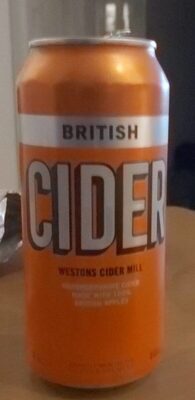Cider - Marks & Spencer - 440ml
Ambiguous barcode: This product has a Restricted Circulation Number barcode for products within a company. This means that different producers and stores can use the same barcode for different products.
×
This product page is not complete. You can help to complete it by editing it and adding more data from the photos we have, or by taking more photos using the app for Android or iPhone/iPad. Thank you!
×
Barcode: 00679473
Common name: Cidre
Quantity: 440ml
Brands: Marks & Spencer
Categories: Beverages, Alcoholic beverages, Ciders
Manufacturing or processing places: Much Marcle; Herefordshire; Angleterre, Irlande, Herefordshire
Stores: Marks & Spencer, Delhaize
Countries where sold: Belgium, France, Ireland, United Kingdom
Matching with your preferences
Health
Ingredients
Food processing
Additives
Ingredients analysis
Nutrition
Environment
Carbon footprint
Packaging
Transportation
Report a problem
Data sources
Product added on by openfoodfacts-contributors
Last edit of product page on by packbot.
Product page also edited by ecoscore-impact-estimator, kiliweb, polo9999, teolemon, yuka.sY2b0xO6T85zoF3NwEKvll55aYXsghf2Czjton2Z1OrXCpb2W8peydPKGqs.




